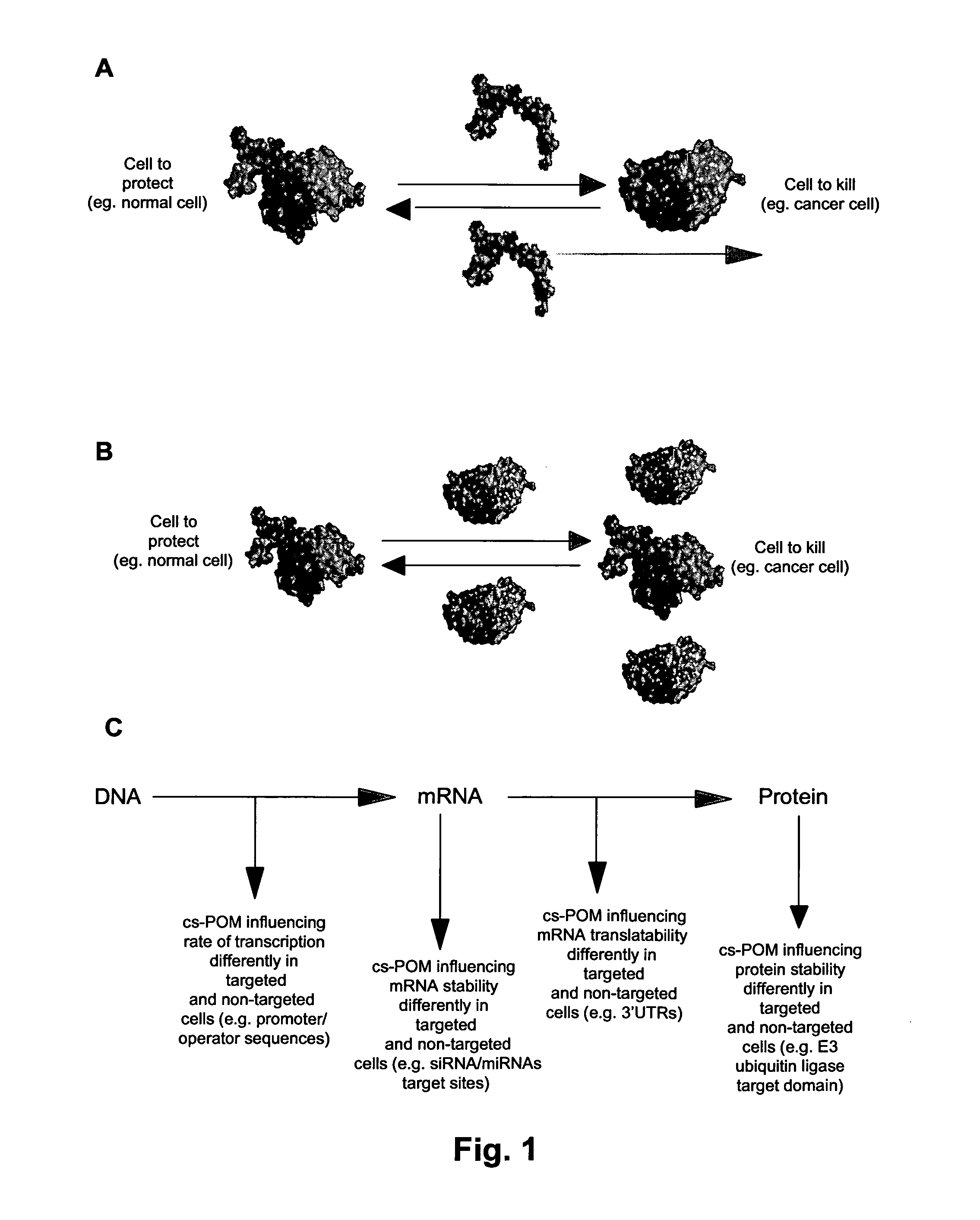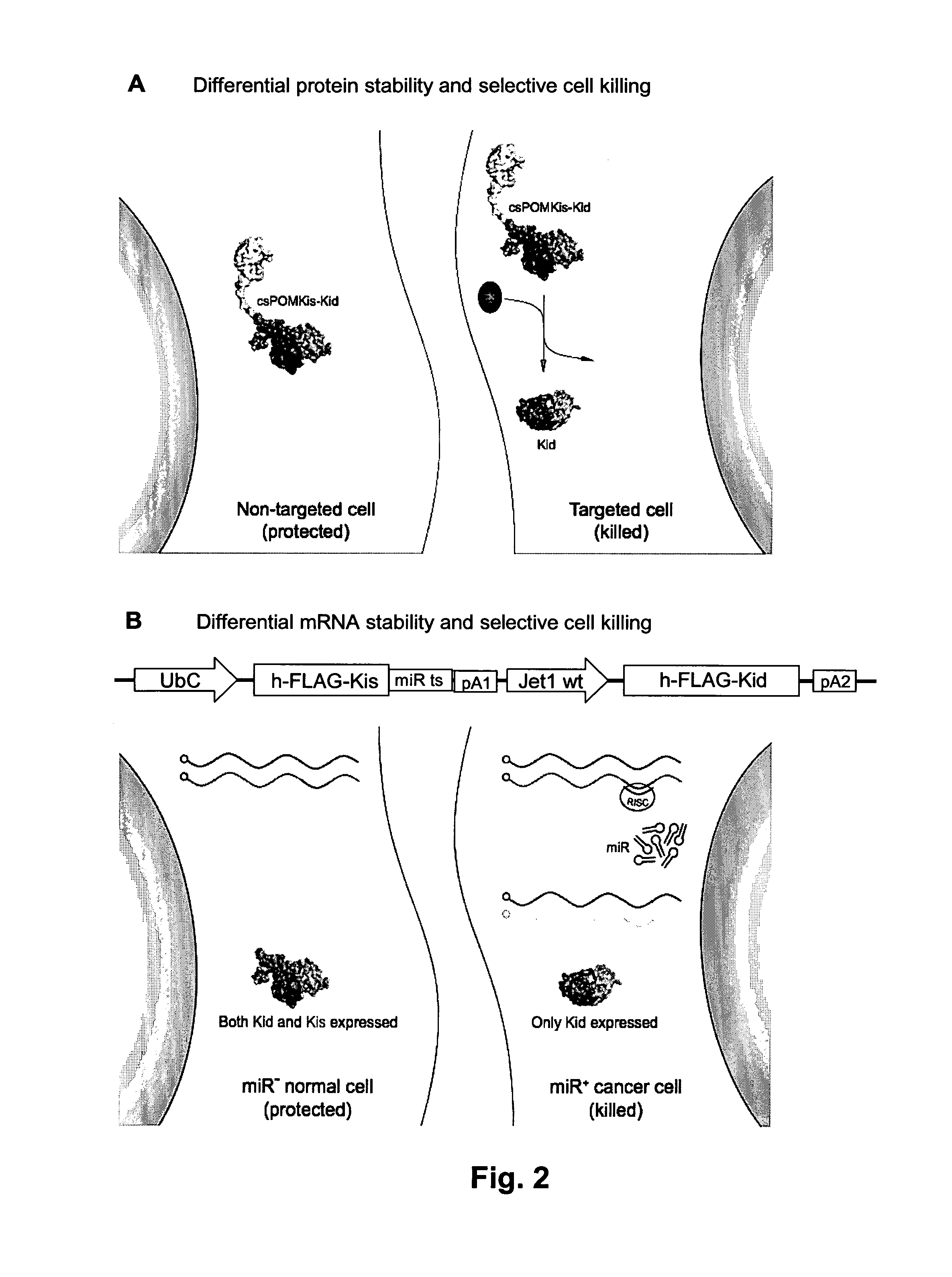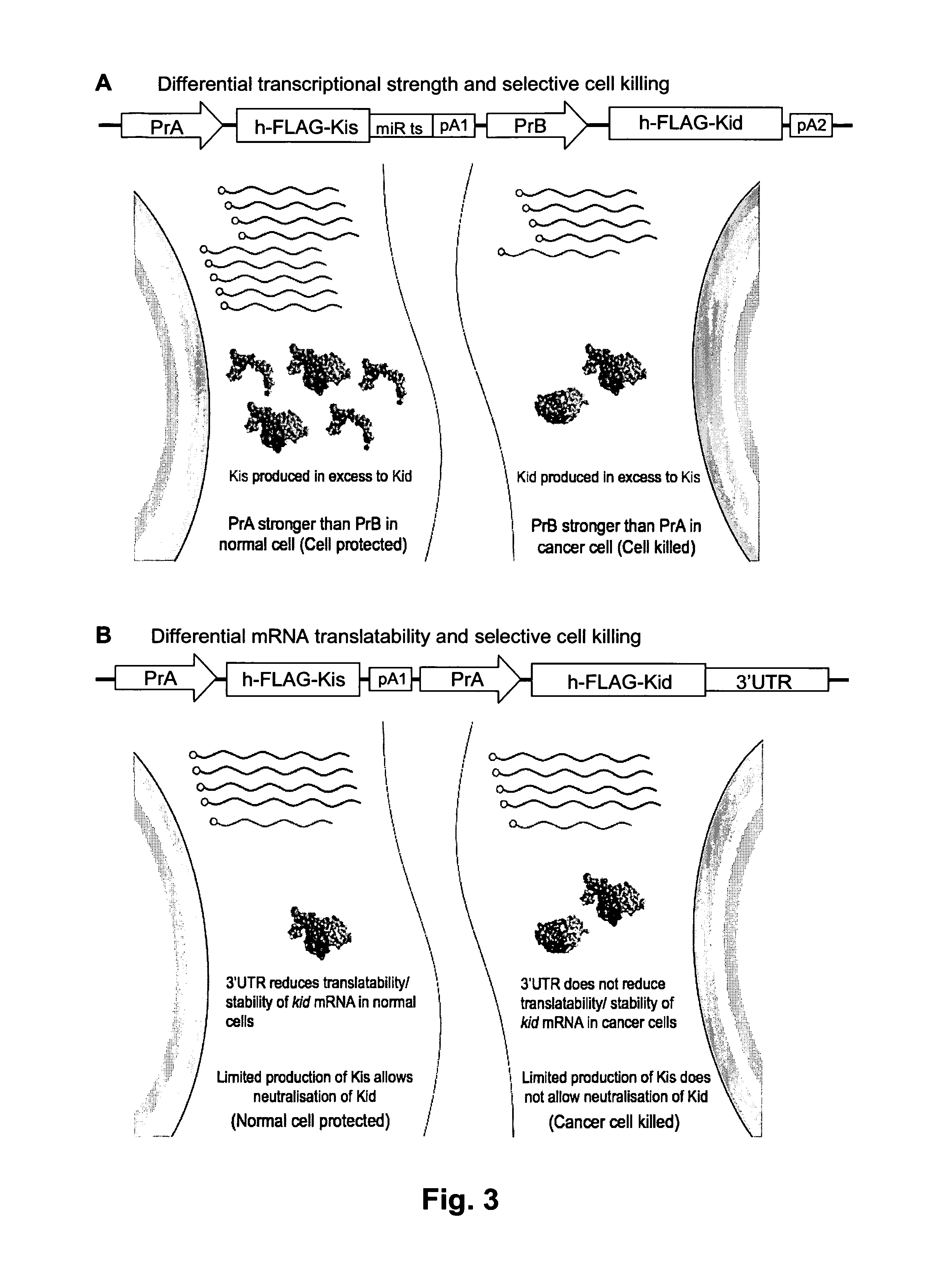Systems and methods for diminishing cell growth and inducing selective killing of target cells
a biological system and target cell technology, applied in the field of biological systems for diminishing cell growth or inducing selective killing of target cells, can solve the problems of affecting cell growth, cell death, and no approach or system has been described so far that could be applied to successfully treat a pathological disease by specifically killing pathologic prokaryotic or eukaryotic cells. , to achieve the effect of selective cell killing and/or cell growth reduction
- Summary
- Abstract
- Description
- Claims
- Application Information
AI Technical Summary
Benefits of technology
Problems solved by technology
Method used
Image
Examples
Embodiment Construction
Material and Methods
1. Plasmids Construction
[0096]1.1. Construction of PDZKis-IRES-Kid plasmids and variants (FIGS. 4 and 7). pUC18 was digested with HindIII and EcoRI and a new MCS containing SfiI-SpeI-BclI-BamHI-BstXI-NcoI-NheI-XhoI-NotI sites was subcloned in there using appropriate annealed oligos. The BamHI-IRES2-BstXI fragment from plasmid pIRES2-DsRed (Clontech) was then subcloned into the BamHI and BstXI sites of the plasmid above to generate pUC18IRES2. A DNA fragment SfiI-Kozak+ATG-MAGI-1aa293-733-(Gly)4-SpeI was amplified using cDNA from HeLa cells, and subcloned into pUC18IRES2 to generate pUC18PDZ4IRES. Similarly, fragments SpeI-FLAG-Kis-BamHI or SfiI-Kozak-ATG-FLAG-Kis-BamHI were obtained by PCR using appropriate oligos, and these were cloned into SpeI-BamHI or SfiI-BamHI sites of pUC18IPDZ4RES2, respectively, to generate pUC18FlagKisIRES and pUC18PDZ4FlagKisIRES. DNA fragments BstXI-Kid-XhoI and BstXI-Kid18-XhoI were amplified from mR1wt and mR118 by PCR (Pimentel et ...
PUM
| Property | Measurement | Unit |
|---|---|---|
| diameter | aaaaa | aaaaa |
| diameter | aaaaa | aaaaa |
| volume | aaaaa | aaaaa |
Abstract
Description
Claims
Application Information
 Login to View More
Login to View More - R&D
- Intellectual Property
- Life Sciences
- Materials
- Tech Scout
- Unparalleled Data Quality
- Higher Quality Content
- 60% Fewer Hallucinations
Browse by: Latest US Patents, China's latest patents, Technical Efficacy Thesaurus, Application Domain, Technology Topic, Popular Technical Reports.
© 2025 PatSnap. All rights reserved.Legal|Privacy policy|Modern Slavery Act Transparency Statement|Sitemap|About US| Contact US: help@patsnap.com



